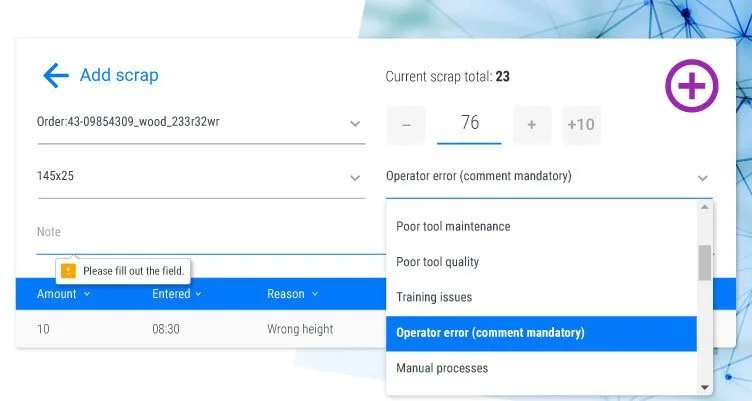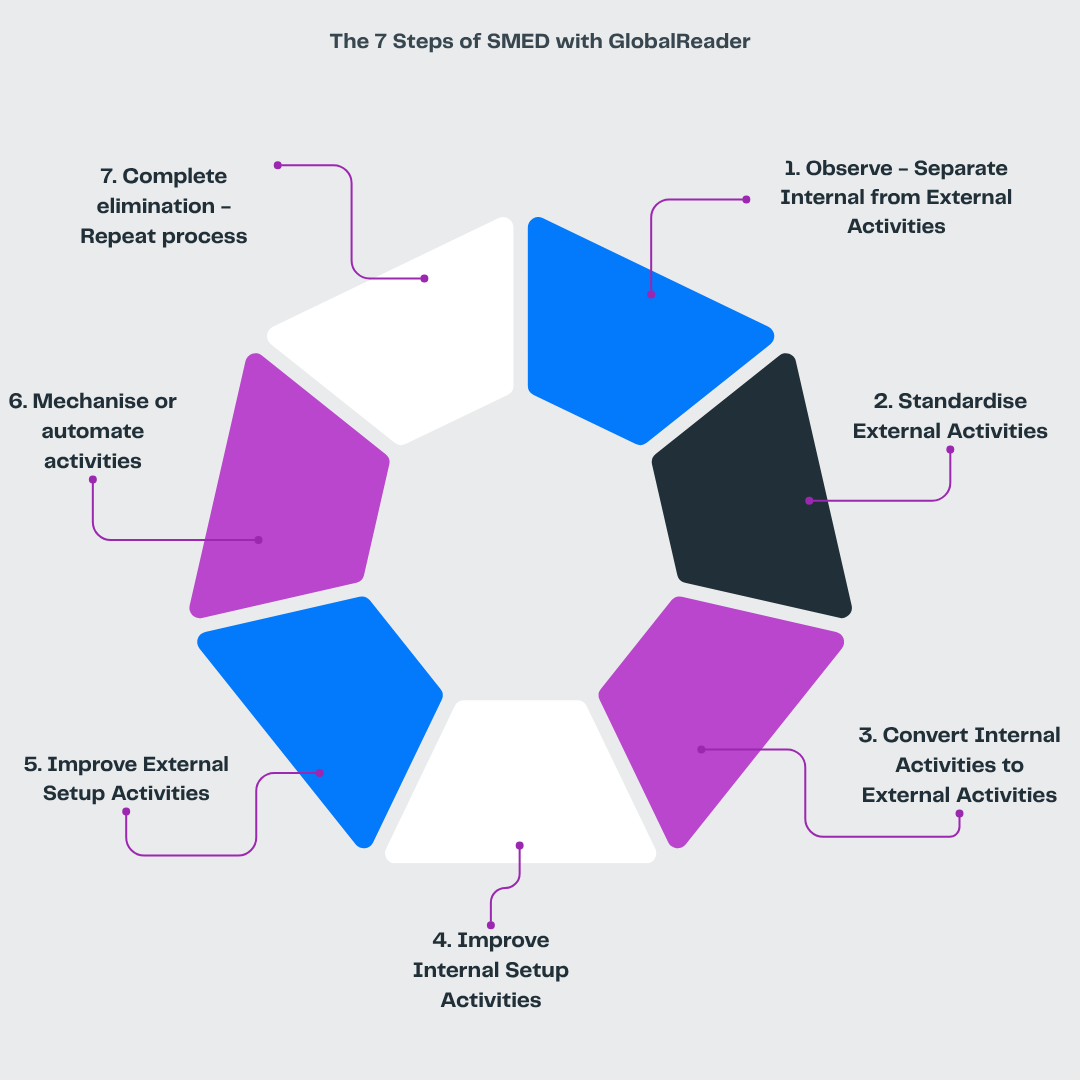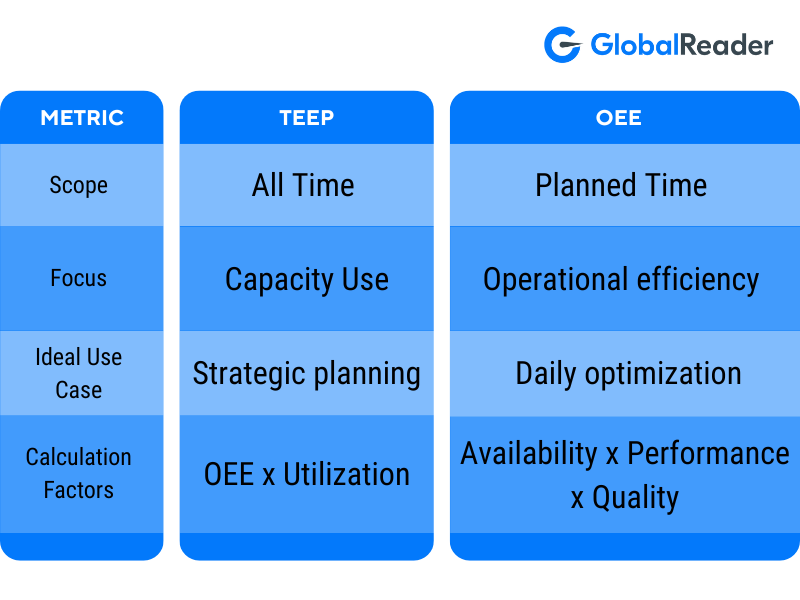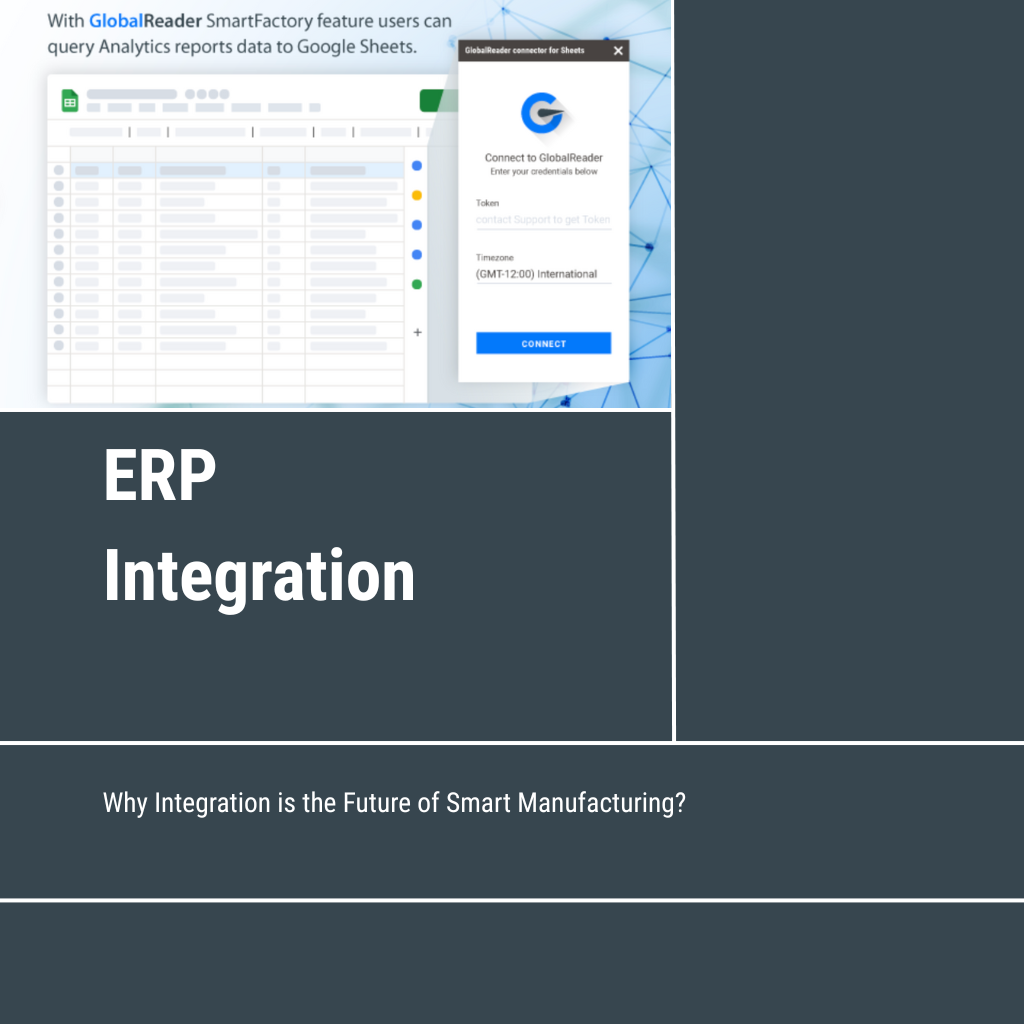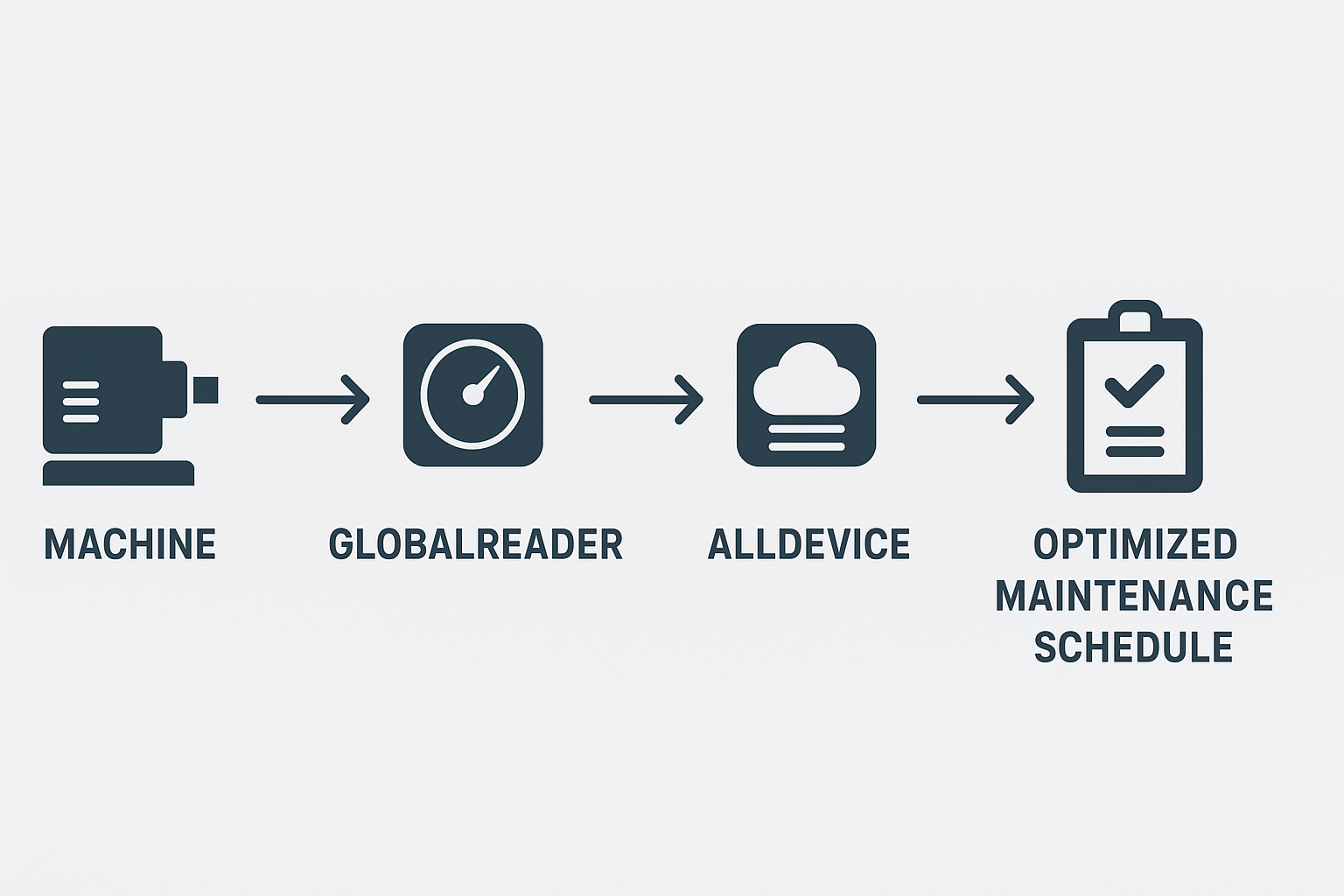Get a comprehensive overview about OEE
Deep Dive Into Digitalisation
Everything about Lean Manufacturing
Read GlobalReader Case Studies about OEE
Everything about Data Analysis
Everything about TEEP
All GlobalReader Posts
SMED principle: Stop Wasting Time and Money on Changeovers
What is SMED in Plain English? The idea is simple: make changeovers fast. Really fast. We're talking about getting your machines switched over from making Product A to Product B in under 10 minutes.
Bridging ERP and IoT: Why Integration is the Future of Smart Manufacturing
Connect machines, operators, and ERP systems to turn fragmented signals into real-time, actionable insights.
Work-Hour Based Maintenance
Work-Hour based maintenance with GlobalReader Alldevice integration Works through automatically collected machine operating hours and transmitting this data daily to Alldevice. Configured to calculate maintenance schedules based on actual workload maintenance is performed precisely when needed – not before, not after.
Kaizen for Continuous Manufacturing Improvement
The Kaizen process typically follows the PDCA cycle: Plan, Do, Check, Act. This cycle of continuous feedback and refinement ensures that improvements are sustainable and impactful over the long term.
Manufacturing Efficiency with Data-Driven Insights
Manufacturers are constantly seeking ways to improve manufacturing efficiency. Many companies are only now beginning to consider the importance of automation and digitalisation. Those who are already exploring these solutions have a distinct advantage.
Cost Of Quality In Manufacturing
Cost of Quality (COQ) is a framework for quantifying all costs incurred by an organisation related to ensuring product or service quality, categorised into:
Prevention costs, such as training, process design and preventive maintenance, aimed at averting defects before they occur.
Appraisal costs, including inspection, testing and audit activities, undertaken to verify conformance to quality standards.
Failure costs, which encompass internal failures (scrap, rework and downtime) and external failures (warranty claims, returns and reputational damage).
By analysing COQ, a company gains visibility into how much it spends on maintaining versus rectifying quality, and can therefore identify where investments in process improvements will yield the greatest savings and performance gains.
Globalreader vs Competitors about TEEP
Discover how GlobalReader outperforms leading competitors like Vorne, MachineMetrics, and Tulip in TEEP optimisation. From real-time data to predictive maintenance and rapid deployment—see why manufacturers choose GlobalReader to unlock hidden capacity and drive profitability.
TEEP vs. Other Metrics – When to Focus on Each
While TEEP (Total Effective Equipment Performance) and OEE (Overall Equipment Effectiveness) are closely related, each serves a distinct purpose. Understanding their differences—and when to prioritise one over the other—can help you optimise your manufacturing operations more effectively.
Improve Production Efficiency with OEE tools!
Consider this real-life scenario: A production line initially cranking out 50 units in an 8-hour shift at a cost of €30 per product. The Production Manager decides to harness the power of a factory tracker to measure Availability, revealing an initial rate of 65%.
A step-by-step guide to What is TEEP (Total Effective Equipment Performance)
TEEP is calculated by multiplying four factors: Availability, Performance, Quality, and Utilization to provide a comprehensive view of how effectively your operation uses all available time, not just the planned production time. Since OEE already includes Availability, Performance, and Quality, Utilisation is the missing factor needed to understand total equipment effectiveness over full calendar time. By measuring both equipment efficiency and utilisation, it helps you uncover the true capacity of your plant.
5 Steps to Digitalisation: Push Your Manufacturing to Maximum Efficiency
In today’s fast-paced manufacturing world, inefficiency, sadly, is the norm, not the exception. All manufacturing companies are innefficient! From outdated equipment to manual processes, factories are losing valuable time and resources every day. This constant struggle with inefficiencies leads to increased costs, reduced productivity, and lost opportunities. Find out the GlobalReader solution for this!
1st Step To Digitalisation: Connectivity - Manufacturing Data Collection
In today's competitive production landscape, manufacturing data collection is the key to unlocking efficiency and driving growth. With the increasing complexity of modern production environments, relying on guesswork or outdated methods is no longer an option.
2nd Step To Digitalisation: Manufacturing Data Analytics
Collecting data is just the beginning; the real challenge lies in manufacturing data analytics based on real-time data. Take the 2nd step to digitalisation now!
3rd Step To Digitalisation: Transparency And Collaboration With Real-Time Data In Manufacturing
In the fast-paced world of manufacturing, having access to real-time data in manufacturing is essential for staying ahead of the curve. With constant changes on the shop floor, knowing what’s happening at any given moment can be the difference between meeting your production targets and falling behind.
4th step of digitalisation: Master Predictive Capacity with Production Scheduling Software
By adding new features in every step of the digitalisation process your factory moves towards becoming a Smart Factory. One key milestone in this is to master predictive capacity with Production Scheduling Software - the ability to anticipate what will happen next in the production process.
5th step of Digitalisation - Change The Culture - Become A Smart Factory
The journey towards smart manufacturing is more than just adopting new technologies; it's about integrating various digital layers to create a fully optimised, intelligent factory - A Smart Factory. It’s a culture change in the company of how things are done from here on forward. Each step in the digitalisation process before contributes to moving away from paper and excel towards digitalisation. By combining data collection, manufacturing data analytics and making sense of this real-time data using production scheduling software, you can achieve a seamless, fully digitalised environment.
How to Implement an OEE Improvement Plan: A Step-by-Step Guide
Implementing an effective OEE improvement plan requires a systematic approach, from assessing current performance to setting goals, optimizing processes, and engaging employees. By leveraging GlobalReader’s comprehensive suite of tools and services, manufacturers can gain real-time insights, predict and prevent equipment failures, and continuously improve their OEE. Start your journey towards higher efficiency and productivity with GlobalReader today.
Real-Time Factory Data: The Key to Maximizing OEE
Real-time factory data refers to the immediate collection and analysis of information. This involves using sensors, IoT devices, and data analytics tools
Understanding the Six Big Losses in Manufacturing
Understanding and addressing the Six Big Losses in manufacturing is crucial for improving manufacturing efficiency and productivity.



